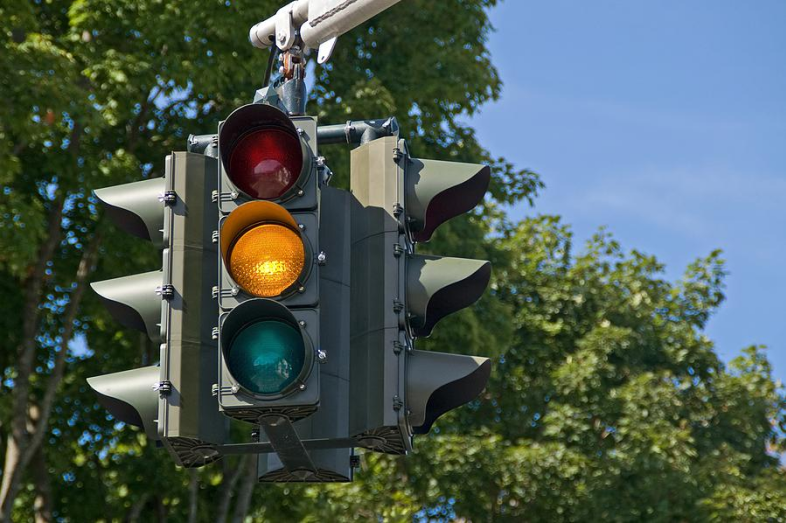
Educating During COVID: Superintendents and College Leaders Scramble to Fill Students’ New Needs
Solutions include more financial aid, free headphones and traffic light wifi hotspots.

Solutions include more financial aid, free headphones and traffic light wifi hotspots.
Pedro Martinez, the superintendent of the San Antonio Independent School District, oversees the education of almost 50,000 students. Ninety percent live in poverty, he said, and half of the families in the district make less than $35,000 a year. Martinez described educating students, kindergarten through high school, who live in cramped homes without computers or internet connections since the pandemic hit in March.
“When you go to a restaurant to pick up food, guess who’s working at those restaurants?” said Martinez, speaking to journalists at a virtual session of the Education Writers Association’s National Seminar. “It’s my parents and it’s my students who are working there. They don’t have the luxury of working from home.”
Martinez and Ruth Simmons, president of Prairie View A & M University, offered first-person perspectives on how they are managing to provide instruction to low-income students during the health pandemic, which has triggered a severe economic recession and coincided with racial protests. Education administrators who serve poor people of color nationwide are dealing with both practical details — from technology to noise — and the seemingly insurmountable — job losses, domestic violence, homelessness and death.
To provide education to these families, Martinez started with telecommunications logistics. In the spring, his district distributed 40,000 computers to children — 80 percent of the district’s students — and an additional 4,000 hotspots to bring WiFi to students’ homes. “Because families have lost their jobs, we’re in the process of acquiring another 10,000 [hotpots],” Martinez said.
He’s working with the City of San Antonio to use traffic signals at intersections to extend WiFi to more homes. “Most of the traffic lights work with WiFi technology, like you have WiFi at Starbucks,” Martinez said. Federal law restricts the ability of schools to give away free WiFi, so as not to undercut private businesses that sell it. San Antonio is trying to figure out a way to restrict traffic signal WiFi for school work only.
Even with adequate technology, distance learning hasn’t been effective, Martinez said. He tried buying headphones for every student to help them focus. “I can’t fix the living conditions. When I look at the Zoom classes, and I see little children running in the background, back and forth,” he said. “I grew up myself in a two bedroom apartment, the oldest of 12 children, and I know I could not have done well in a remote learning [environment] even if the district gave me a device and a hot spot.”
Martinez described the difficulty of making decisions that balance safety and academics. He said he worries about losing a generation of students without an education.
As Martinez spoke, coronavirus cases were still increasing in San Antonio. He said he planned to begin the 2020-21 school year with three weeks of remote online instruction, and then try to bring students back into school buildings for in-person instruction, if it is possible to do so safely.
Another concern are high school seniors who have just graduated and were accepted to college, but not enrolling.
“They are good kids,” he said. “They are feeling the pressure to stay home and help their families.”
Martinez told a story about a graduating senior in his district who had been accepted to the Massachusetts Institute of Technology on scholarship but had second thoughts about attending after the pandemic hit. Martinez said he lobbied the family to let her go, and the young woman is again planning to attend college.
Ruth Simmons, president of Prairie View A&M University, a historically black institution outside of Houston, said she is receiving emails and calls from students and parents who say they cannot come this fall, especially low-income students and those who are the first in their families to attend college.
“I’m concerned about the students who feel that they cannot have the luxury of being enrolled in college when their families are suffering so,” Simmons said.
“How do you justify living on a college campus, having access to food, having reasonable living accommodations, and you know that your family is on the verge of homelessness?” Simmons said. “It’s very hard for students to endure this.”
About 85 percent of Prairie View students are Black and two thirds are poor enough to qualify for federal Pell grants.
She’s worried about students who take time off.
“One of the things we know, for students who do stop out, they won’t come back,” Simmons said.
Many hope to return, but family obligations and work interfere, she explained.
“Their plans go awry,” she said. “Our aim is to keep students in school. For every year they stay in college, their lives will be improved.”
One thing that helps keep low-income students in school is financial aid. But Simmons explained that her budget has already been cut because of lost tax revenue in the State of Texas. Her university, Prairie View A&M, is a public university, reliant on taxpayer funds.
That’s a problem shared by all public schools. Education — K-12 and higher education combined — is the largest state expenditure in Texas and most states around the nation. Steeper cuts to both are expected this coming year.
Your post will be on the website shortly.
We will get back to you shortly